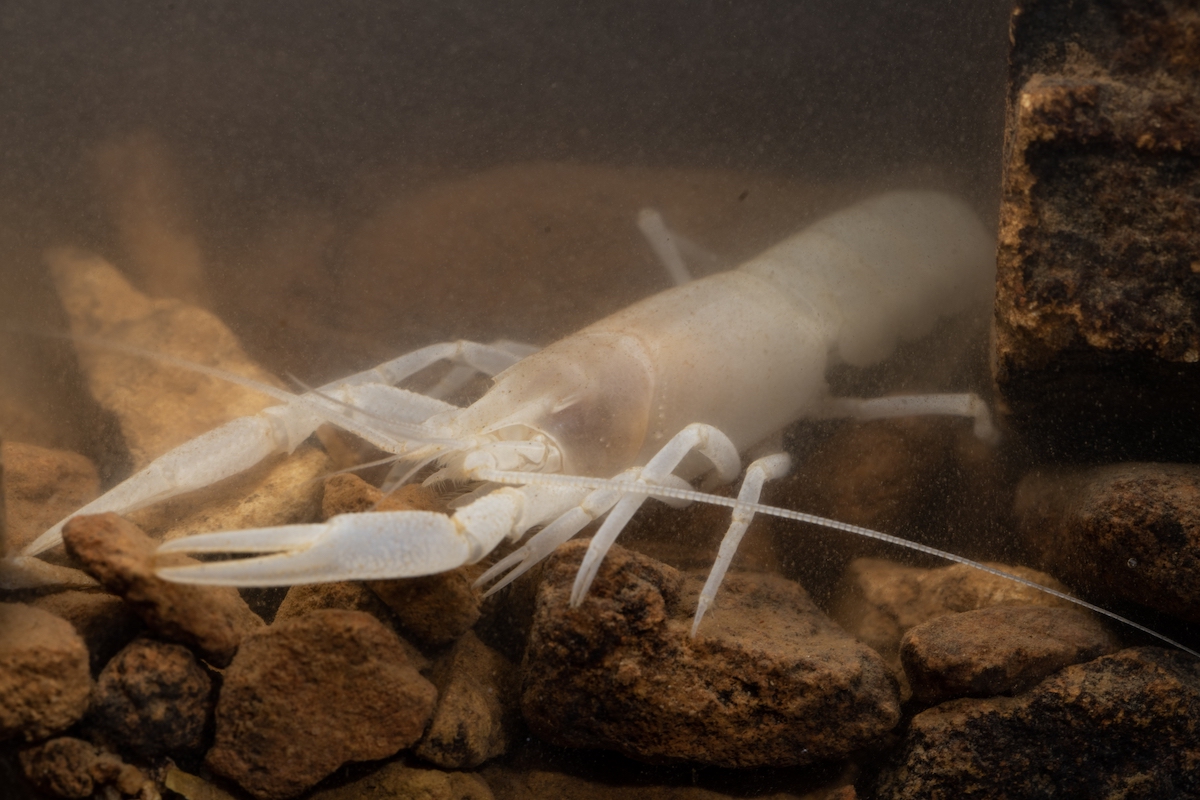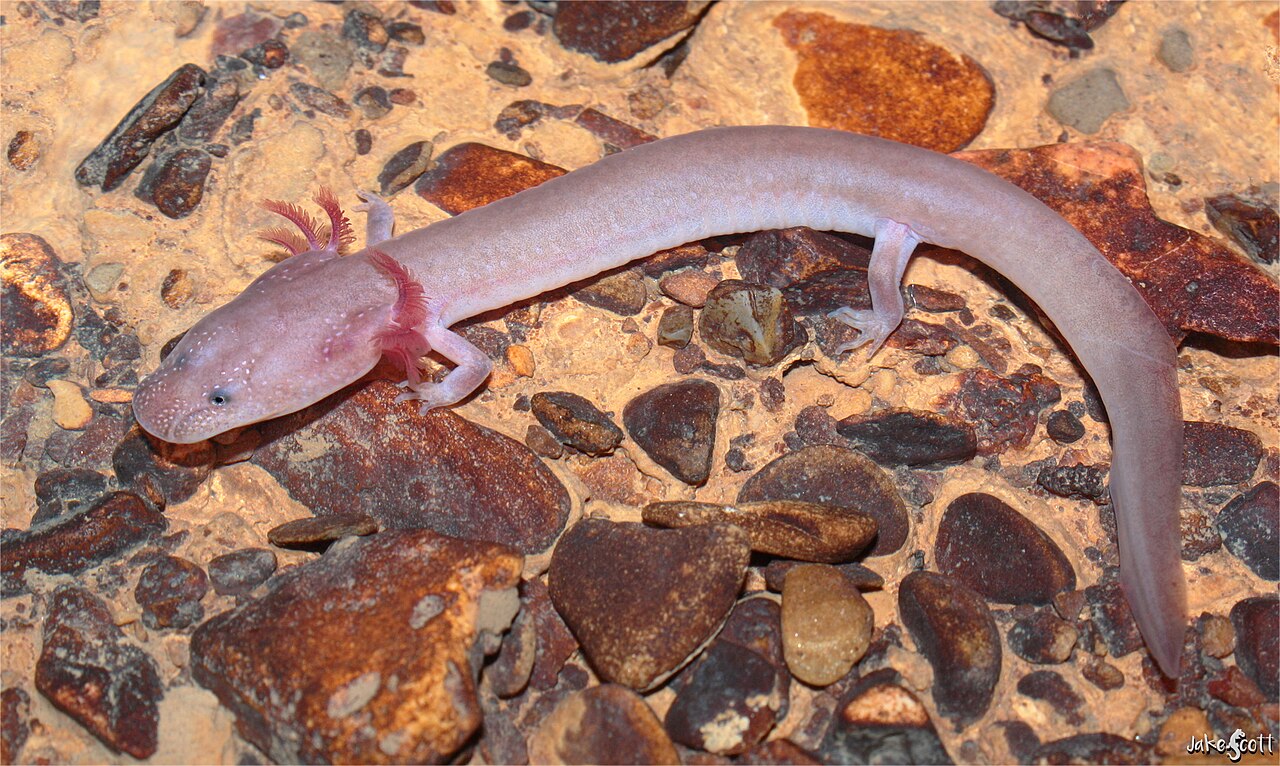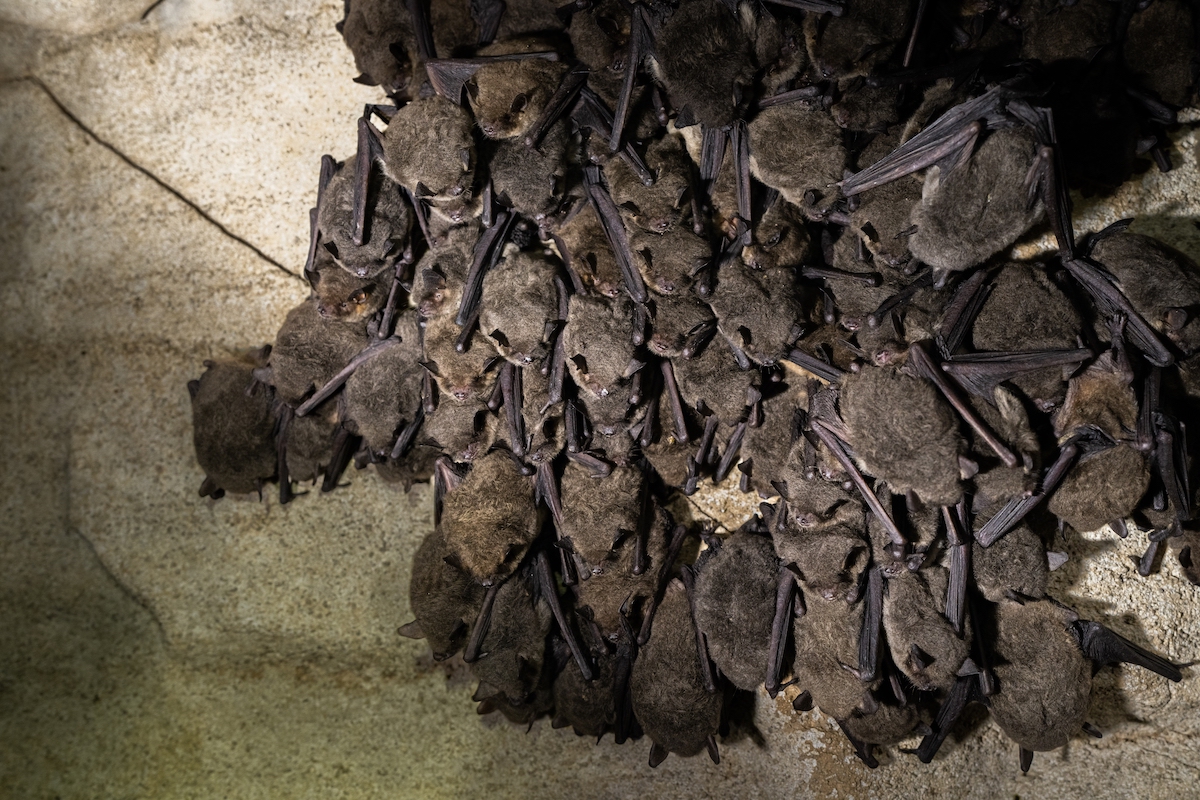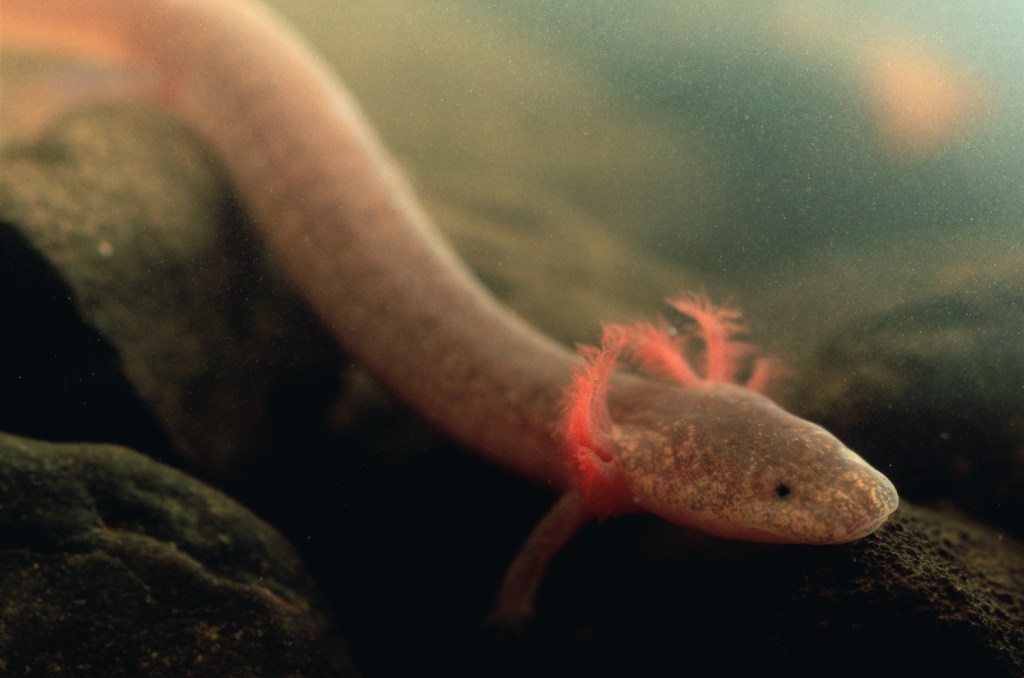The Nature Conservancy’s Cave and Karst Program Manager Cory Holliday likes to think of caves as a “bonus habitat.” He says, “if you’re in a place with caves, that’s just an extra ecosystem.”
Holliday’s home of Tennessee has an abundance of caves. These 12,000 habitats help make the it the most species-rich inland state in the country.
Similar to sinkholes and springs, karst caves are formed over long periods of time when water moving underground dissolves soluble bedrock. “Life on this planet is going to find a way to exploit any potential place,” says Holliday. “Those open spaces have become really unique habitats and ecosystems for a whole suite of organisms.”
While most habitats are driven from the sun and plants, deep sea vents and caves are fascinating exceptions to this. Caves are allochthonous, meaning they are dependent on outside nutrients. Food can be imported in via streams bringing in debris. Animal movements can also facilitate the nutrient flows. Some organisms like cave crickets and bats leave caves to forage and then bring that energy back with them. “Their feces and guano kicks off that ecological chain,” Holliday says. Fungus and bacteria feed on the waste products. Small organisms including springtails and millipedes feed on the bacteria and fungus.

“This is a unique suite of organisms that are completely adapted to this really nutrient poor dark environment with no plants and no sunlight. It’s a really unique place to have evolved,” says Holliday.
A lot of the organisms that are stuck in caves are remnants from the last Ice Age. As the glaciers were receding, these animals were left with a quickly changing habitat and landscape. Some of them found shelter in caves and they just stayed there and evolved over thousands of years. This speciation means some isolated groups have tiny distribution of just parts of a county.
Holliday spends much of his efforts dealing with human impacts to caves. “We do a lot of cleaning up of historic caves that have been trashed or sinkholes that are full of garbage,” he notes.

There are modern threats to the ecosystems as well. “It’s a developing landscape, and TNC is not in the way of that, the organization just makes sure it’s done in a responsible way,” he says.
Karst systems are a challenge to take care of because the flow paths for water is hard to understand. “We support a lot of dye trace work to make sure the cave organisms are being thought of and not forgotten because they live underground in these dark mysterious places,” says Holliday.
Cave tours offer folks a glimpse of the underground world, but cave adapted organisms in general are difficult to find and don’t respond well to human activity. “The National Parks Service is really good about putting the resource first but also finding opportunities to do outreach and education about cave resources and ecology,” says Holliday.
Even if you can’t make the trip underground, these are some of the coolest cave critters.
Top 10 List
-
Copepods and Isopods

A Madison cave isopod in Virginia. © Eric C. Maxwell / iNaturalist Similar to island biogeography, you get higher levels of speciation with cave dwellers since connections for those organisms is quite limited. Ranges tend to be extremely small. The more aquatic an organism is, the larger the ranges, as there can be groundwater connections in these small spaces.
Copepods and isopods are small crustaceans found widely in freshwater and saltwater habitats. They can move through caves, leading to some gene flow. These microscopic critters can be found in nearly all habitats, yet numerous cave specific species have been identified.
Depending on the species they can be free-living or parasitic. The Madison Cave isopod has one of the larger distributions. It has been documented in a narrow band of habitat from central Virginia to the eastern tip of West Virginia.
-
Fungus Gnats

Fungus fly larvae create webs at the entrances to caves. © Eric C. Maxwell / iNaturalist As a flying organism, Macrocera nobilus has a larger range distribution. Holliday calls it “a bizarre organism that sounds like something from a comic book.”
This fungus gnat has an extended larval stage. “To survive low nutrient conditions, they just have generally lower and slower metabolisms,” says Holliday. Although it doesn’t glow like the closely related glowworms, they do show a bright yellow color within their translucent bodies.
Holliday calls it “a slimy, tiny, eyeless, little worm that spins webs.” He continues that the fungus fly larvae are just “hanging out waiting for something to get caught in their web and then they just kind of absorb it.” The species breeds at cave entrance, and the larva is unique to caves.
-
Pseudoscorpions

A tiny pseudoscorpion, Chitrella archeri. © Eric C. Maxwell / iNaturalist Cave dwelling pseudoscorpions are very small, roughly 3-5 mm in length depending on the genus. But for their body size, they have huge pinchers.
“Under the microscope they look like a massive crablike predator,” says Holliday. They’ll hang out in areas of higher nutrients including near streams and bat guano piles, just waiting for springtail to grab up and eat.
-
Cave Shrimp

Southern cave crayfish (Orconectes australis) in Warren County, Tennessee caves. © Stephen Alvarez The Kentucky cave shrimp is the perfect example of how isolated many cave species are. This one is a federally endangered species found exclusively at Mammoth Cave National Park and surrounding areas. Most species of cave shrimp are about an inch long and are difficult to see.
They use sensitive antennules to sense food. In general, cave critters breed less frequently and develop and grow slower. According to Holliday, they are “adapted to not eating very much and not exerting much energy.” Because of this, cave organisms tend to have life cycles that take longer to complete. Cave shrimp can live 10-15 years.
-
Cave Salamanders

The Tennessee cave salamander is just one of many cool cave species. © Caudatejake / Wikimedia Commons Like many other subterranean critters, cave salamanders don’t produce pigment and they don’t have eyes. A reduction or loss of eyes does a couple of things according to Holliday. “In the brain it saves room for other stuff. A larger area of brain allows them to map out their landscape and remember it. They are just incredible at that,” he says.
Cave salamanders sometimes show seasonal movements within the caves, preferring closer to the openings during the summer and moving deeper into the cave system in winter.
-
Cavefish

Typhlichthys subterraneus, southern cavefish in Hazel Ward cave in Warren County Tennessee. © Stephen Alvarez Caves with TN Nature Conservancy Cory Holliday. Cavefish are often the largest predators in caves. These species tend to have larger distributions, found in portions of a couple of states as opposed to in just a few counties. While their names hint at geographical ranges, northern and southern cavefish overlap in Mammoth Cave National Park.
Lacking pigmentation, the whitish fish are “very beautiful to watch swim,” says Holliday.
He continues, “they have these long flowing fins, and they are just moving slowly and gracefully.” This helps them conserve energy. Cavefish have specialized sensory cells that help them detect their surroundings and their prey.
The National Park Service notes that “for centuries, their lives have puzzled and intrigued scientists. Their survival depends on the quality of surface and groundwater that makes its way into the cave; human activities and interactions with our natural resources make an impact on Mammoth Cave’s subterranean species.”
-
Bats

A group of gray bats exhibiting signs of white nose syndrome in Hubbard’s Cave. © Stephen Alvarez There are more than 1,400 species of bats and many of them don’t require caves. But bats are undoubtedly the most well-known cave creatures. In the cave habitats of the Appalachians, they also face many threats. Ensuring a future for bats is a major focus of The Nature Conservancy’s cave conservation efforts.
“Bats are extremely vulnerable, and we spend a lot of energy trying to make sure bats have what they need,” says Holliday.
White-nosed syndrome, a disease that impacts cave hibernating bats, is caused by an introduced fungus. It can have devastating consequences on bat populations, but conservation efforts remain strong. “Bats are the ecological driver for these systems. They connect to all of the cave ecology,” says Holliday.
The Nature Conservancy works with partners to better understand bat behavior and migrations. For instance, TNC was the first organization to apply radio transmitters small and light enough to adhere to bats.
Many of the species found in caves remain poorly understood. Ongoing research efforts and cutting-edge tools can conservationists better understand these creatures and their needs.




Dear Ken,
Thank you for these incredible photographs and information about these tiny cave-dwelling critters that have been around for, what sounds like, millennia!
I’m a bit confused about the photo of the cave salamander. From the photo, the salamander sure looks like it has eyes. But you say that cave salamanders do not have eyes —
could you please explain what the two orbs above its mouth, that look very much like eyes, are in actuality?
thanks again!
Ginny
Interesting read! I grew up in Carlsbad, NM. Did some spelunking as a teen and enjoyed the subterreanean world. This writing brought back happy memories.
Thanks!